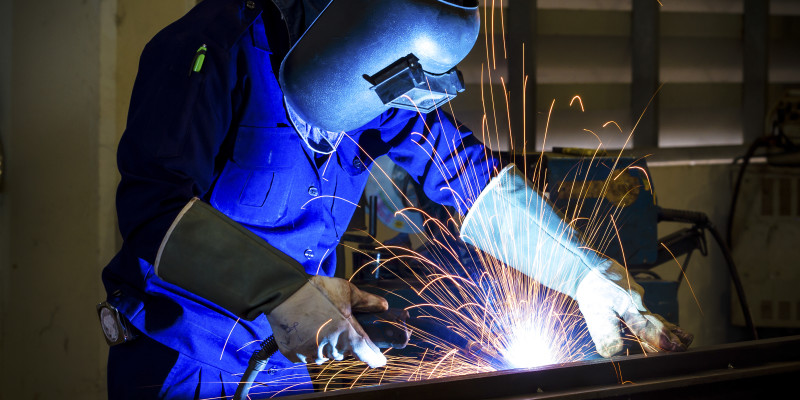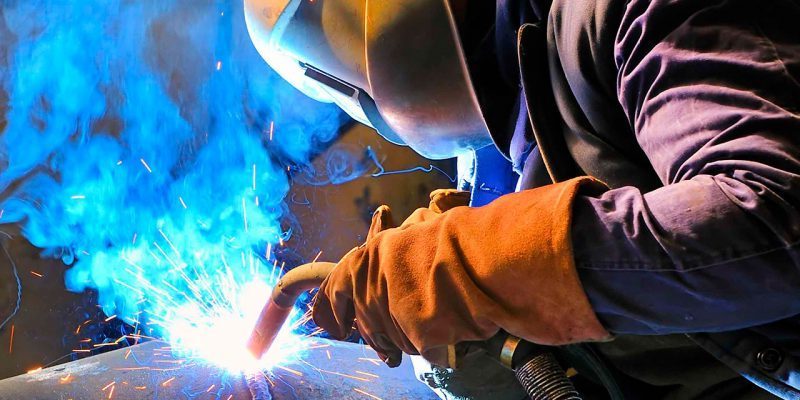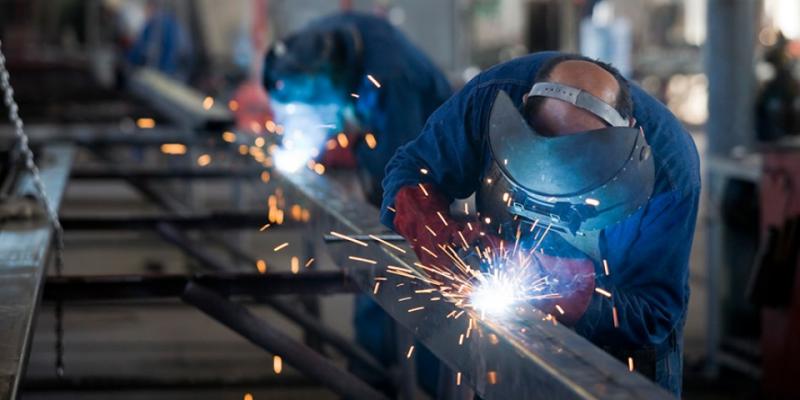Welding is an ordinary, professional, and vital industrial process that can solve many problems by melting and welding two pieces of metals through different procedures. Nowadays, welding is expanding more than before and plays many essential roles in our lives. Such as providing effective metalworks from house building, bridge making, and electronics to pipelines under the oceans. Suppose that no welding is possible for us; what would happen then? Is any construction built? Is any car manufactured? Our life will be defective then. We use welding to create and make new things, but welding can also use to fix and repair different objects. Some agricultural and mining machinery and equipment will erode after a long working time. Welding can cover them with a smooth and thin layer to protect them more. Also, acid tanks will corrode after a while, and welding can fix it too. These are only some of the usages of welding. With the invention of welding and the growth of technology in the first 19th century, welding started to get its position among people and workers after the Industrial Revolution. This popularity and acceptance caused it to get more advanced and improved. Many other kinds with different features and abilities appeared to use in various places and for most materials and metal. Some of the most popular types of welding which you will read more about are:
- Gas Metal Arc Welding (GMAW)
- Gas Tungsten Arc Welding (GTAW)
- Shielded Metal Arc Welding (SMAW)
- Flux-Cored Arc Welding (FCAW)
Metal Arc Welding (GMAW)
Gas Metal Arc Welding (GMAW) is one of the Arc welding processes. In this way, the Arc will occur between filler and weld pool or the base metals. The filler melts and causes welding between pieces. For the protection of weld pool and melting, protective gas will use. If the gas is inert, that is MIG, but welding is MAG if the gas is active.  Among inert gases, Argon and Helium are more common and functional. CO2 is suitable for MAG because it is cheaper and can affect welding oxidation. In this type of welding, there is a solid wire electrode as a filler with low slag. These wires are around a spool that feeds electrical power and the electrode. Naturally, to prevent temperature fluctuations, we warm them before use. The preheating temperature is related to its chemical, thickness, electrode dimension, and the way of joint. The burner will do this preheating. GMAW has many pros and cons.
Among inert gases, Argon and Helium are more common and functional. CO2 is suitable for MAG because it is cheaper and can affect welding oxidation. In this type of welding, there is a solid wire electrode as a filler with low slag. These wires are around a spool that feeds electrical power and the electrode. Naturally, to prevent temperature fluctuations, we warm them before use. The preheating temperature is related to its chemical, thickness, electrode dimension, and the way of joint. The burner will do this preheating. GMAW has many pros and cons.
- First of all, this welding is suitable for welding ductile metals like aluminum.
- With this style, you can weld without pauses, and it is ideal for long-term weldings, like in shipbuilding.
- Another advantage of this style is to weld most of the magnetic metals.
- GMAW is suitable for spot welding.
- Last but not least, thanks to its concentration of arc temperature and high power to surface ratio, it is ideal for thin and straight base metals.
Gas Tungsten Arc Welding (GTAW)
Gas tungsten arc welding (GTAW) is another welding process that is the most challenging method. This method needs more time, so the welding quality and resistance are much more than other methods. The welding in this method is so clean and used when the welding line is consequential. The electrode in GTAW is a tungsten electrode that is non-consumable and remains static and intact during welding. This electrode is pure with 1 to 4 percent impurity. This electrode is made of tungsten because this element has the highest melting point. The welder needs two hands, one for taking the welding torch and another for feeding the fillers to the base metals.  The welder can control the heating by a pedal. For welding thin base metals, the filler is not necessary. The selection of filler’s standard, type, and thickness is according to the base metals and their materials and the welding current. The protective gas in GTAW is Argon and Helium. Both of them are inert and can isolate the arc. Then they can protect the tungsten electrode and weld pool from O3. The usages of GTAW are in Aerospace Industries, Automotive Industries, Nuclear Systems, Shipbuilding industries, etc. The main features of GTAW are:
The welder can control the heating by a pedal. For welding thin base metals, the filler is not necessary. The selection of filler’s standard, type, and thickness is according to the base metals and their materials and the welding current. The protective gas in GTAW is Argon and Helium. Both of them are inert and can isolate the arc. Then they can protect the tungsten electrode and weld pool from O3. The usages of GTAW are in Aerospace Industries, Automotive Industries, Nuclear Systems, Shipbuilding industries, etc. The main features of GTAW are:
- This method can be used for stainless steel, bronze, nickel, copper, manganese, aluminum, brass, and gold.
- It is clean welding without any poisoned fumes.
- Used for precise and perfect welding on curved and small metal bases.
- It is functional for both thin and thick welding metal bases.
- It helps for welding that the appearance of the welding line is essential.
Shielded Metal Arc Welding (SMAW)
Shielded Metal Arc Welding (SMAW) is a method in which flux-covered electrode is used. The flux is responsible for the protection of the arc and weld pool. The filler is the metal in the core of the electrode. In this method, both direct current and alternating current are used. SMAW has four stages:
- The potential difference between the head of the electrode and the metal base causes an electrical current.
- Thanks to this potential difference, the gas among the electrode and metal base will be ionized and conductor of electrical current. The arc will be formed.
- The electrode and the metal base will play the role of cathode and anode. Electrodes move from the cathode to the anode, and this transfer causes heating and melting.
- A Weld pool will establish, and the flux will protect it. After a little, they will get cold. Welding and slag will.
 Like other welding methods, choosing the proper electrode depends on the metal base. SMAW has some advantages and disadvantages. Some of the pros are:
Like other welding methods, choosing the proper electrode depends on the metal base. SMAW has some advantages and disadvantages. Some of the pros are:
- Most of the steels and their alloys can be welded by this method.
- This method can be used anywhere when another method cannot be used.
- It is cheaper, and its equipment is easy to move.
- There is no need for gas; flux can protect the weld pool.
Some of the disadvantages are:
- Slags should be removed after welding.
- Welding is not powerful enough for other metals and materials (except iron and steel).
- Welding is not possible in bad weather and atmosphere.
- The flume rate is high.
- The welding quality is directly related to welders’ skills.
Flux-Cored Arc Welding (FCAW)
Flux-Cored Arc Welding (FCAW) is an automatic or semi-automatic welding method. This method needs a flux-cored electrode, stable voltage, and amperage. Protective Gas is not necessary, but sometimes, it uses. Flux protects the weld pool. Thanks to the mobility and the high welding speed, it is suitable for construction and building. FCAW can be a substitution for SMAW. The advantages of FCAW are:
- In FCAW, welding can be done in all directions.
- There is no protective gas in use.
- It is suitable for welding in the wind and bad weather conditions
- It is ideal for quick and emergency welding.
- In comparison with GTAW and SMAW, no welding skills are necessary.
- It is easy to move.
- Electrode replacement during welding is not required.
 But FCAW has some limitations:
But FCAW has some limitations:
- Ventilation and air conditioning are necessary.
- Its equipment is costly.
- There is no time to clean the slag during welding.
- Expensive filler and electrode in comparison with GMAW.
- Filler replacement is more complex and time taking than GTAW and SMAW.

0
0